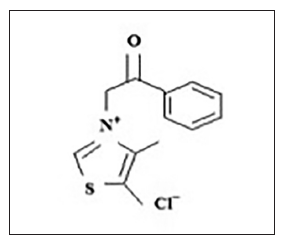Glycation is the process of linking a sugar and free amino groups of proteins. Cross-linking of glycation products to proteins results in the formation of cross-linked proteins that inhibit the normal functioning of the cell. Advanced glycation end products (AGEs) are risk molecules for the cell aging process. These ends products are increasingly synthesized in diabetes and are essentially responsible for diabetic complications. They accumulate in the extracellular matrix and bind to receptors (receptor of AGE [RAGE]) to generate oxidative stress and inflammation. particularly in the cardiovascular system. Treatment methods targeting the AGE system may be of clinical importance in reducing and preventing the complications induced by AGEs in diabetes and old age. The AGE cross-link breaker alagebrium (a thiazolium derivative) is the most studied anti-AGE compound in the clinical field. Phase III clinical studies with alagebrium have been successfully conducted, and this molecule has positive effects on cardiovascular hypertrophy, diabetes, hypertension, vascular sclerotic pathologies, and similar processes. However, the mechanism is still not fully understood. The primary mechanism is that alagebrium removes newly formed AGEs by chemically separating α-dicarbonyl carbon–carbon bonds formed in cross-linked structures. However, it is also reported that alagebrium is a methylglyoxal effective inhibitor. It is not yet clear whether alagebrium inhibits copper-catalyzed ascorbic acid oxidation through metal chelation or destruction of the AGEs.
It is not known whether alagebrium has a direct association with RAGEs. The safety profile is favorably in humans, and studies have been terminated due to financial insufficiency and inability to license as a drug.
Cite this article as: Toprak C, Yigitaslan S. Alagebrium and Complications of Diabetes Mellitus. Eurasian J Med 2019; 51(3): 285-92.

.png)
_In%20Progress-1%20(1)_page-0001.jpg)

.png)
.png)
